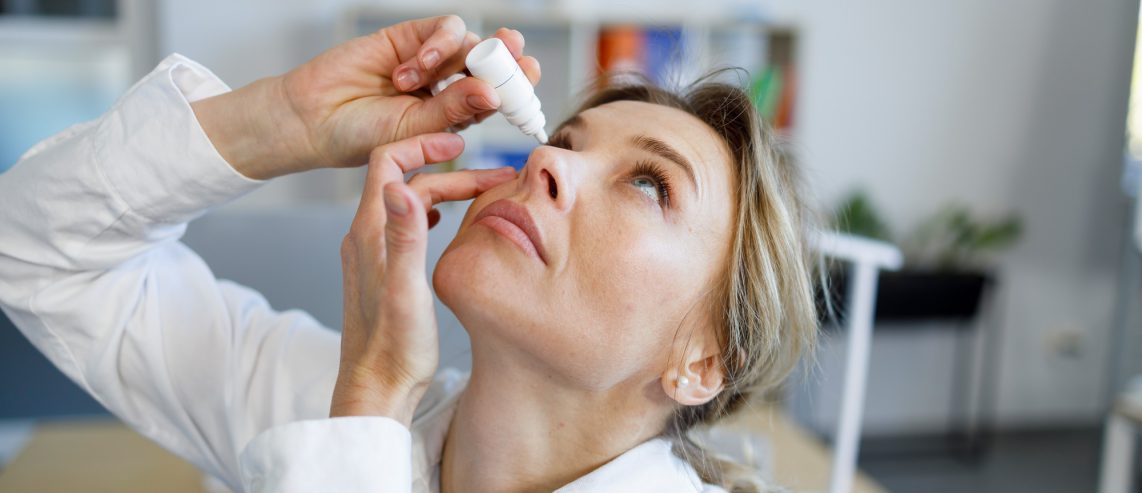You may know that diabetes increases a person’s risk for several other ailments, but is there a connection between diabetes and glaucoma? The short answer is: maybe. Because glaucoma is one of the most common reasons for vision loss globally, it’s important to understand the possible connection, the risks, and the treatments available.
Never Miss a Beat!
Subscribe to Our HealthBeat Newsletter!
Thank you for subscribing!
You can now select the specific newsletters you'd like to receive.
You are already subscribed.
Subscribe to more newsletters in our email preference center.
Sorry, an error occurred. Please try again later.
Get Healthy Tips Sent to Your Phone!
What Is Glaucoma?
Glaucoma is an age-related eye disease that causes the pressure inside the eye to increase. Commonly the result of poor drainage, this buildup of fluid in the eye puts pressure on the optic nerve. If left undiagnosed and untreated, glaucoma can result in partial or total blindness in one or both eyes.
The most common form of glaucoma is open-angle glaucoma. It occurs when the eye’s drainage canals build up a resistance and cannot drain the fluid of the eye completely. This disease can go unnoticed because most people with open-angle glaucoma do not experience any symptoms.
Closed-angle glaucoma, also referred to as narrow-angle or angle-closure glaucoma, is a rare condition and can happen quite quickly. It appears when the angle between the cornea and iris is too narrow and blocks the eye’s drainage canals.
The blockage prevents the fluid from draining and increases the pressure of the eye. Because it results from spacing within the eye, closed-angle glaucoma can occur simply from the pupil dilating too far too quickly.
What Is Diabetic Retinopathy?
One side effect of diabetes that specifically affects the eyes is diabetic retinopathy. Diabetic retinopathy is damage to the blood vessels of the retina — the light-sensitive cells at the back of the eye. High blood sugar can damage these vessels, causing them to swell and leak into the retina. This results in blurry vision or the stoppage of blood flow.
When diabetic retinopathy is still in its early stages, it appears as small, blood-filled sacs in the vessels. Your eye doctor will notice the onset of retinopathy at your regular eye exam — but you will not notice it.
In its later stages, however, diabetic retinopathy can cause more serious bleeding and result in vision changes, including:
- Blurred vision.
- Dark areas in your vision.
- Floaters in your vision.
- Vision loss.
If you have diabetes and experience any of these vision changes or you notice more difficulty than usual in reading or completing detailed work, contact your doctor.
People who have high blood pressure, high blood sugar, or high cholesterol or who smoke are more at risk for diabetic retinopathy.
Glaucoma and Diabetes
People with diabetes are more likely to get glaucoma, but why is that? The truth is that there is no epidemiological evidence of an association between diabetes and glaucoma — yet. A 2017 study published in the International Journal of Ophthalmology showed a strong link between diabetes and glaucoma, but the mechanisms connecting them were unclear.
Although the connection is uncertain, we do know that diabetes can lead to degenerative eye disease in the form of retinopathy. If you have diabetes, be sure to ask your doctor about diabetic eye care.
Treatment for Glaucoma
The effects of glaucoma are irreversible; however, proper treatment can slow or prevent vision loss. That’s why regular checkups with your eye doctor are important in catching early warning signs of glaucoma.
Treatments for glaucoma aim to lower the pressure of the eye, and options include eye drops, medication implants, oral medications, laser treatment, and surgery.
Surgery options include:
- Drainage tubes, in which the surgeon inserts small tubes into the eye to allow fluid to exit.
- Filtering surgery, in which the surgeon creates an opening in the eye to allow fluid to leave the eye.
- Laser therapy, in which the surgeon uses a laser to enable the tissue of the eye to drain fluid better.
About UPMC Vision Institute
The UPMC Vision Institute is a national leader in the treatment of eye diseases and disorders. We seek to improve and restore your vision to help your quality of life, diagnosing and treating a wide range of conditions in both children and adults. Our treatments include both surgical and nonsurgical options. We also offer routine eye screenings and have full-scale optical shops. Find an eye expert close to you.
